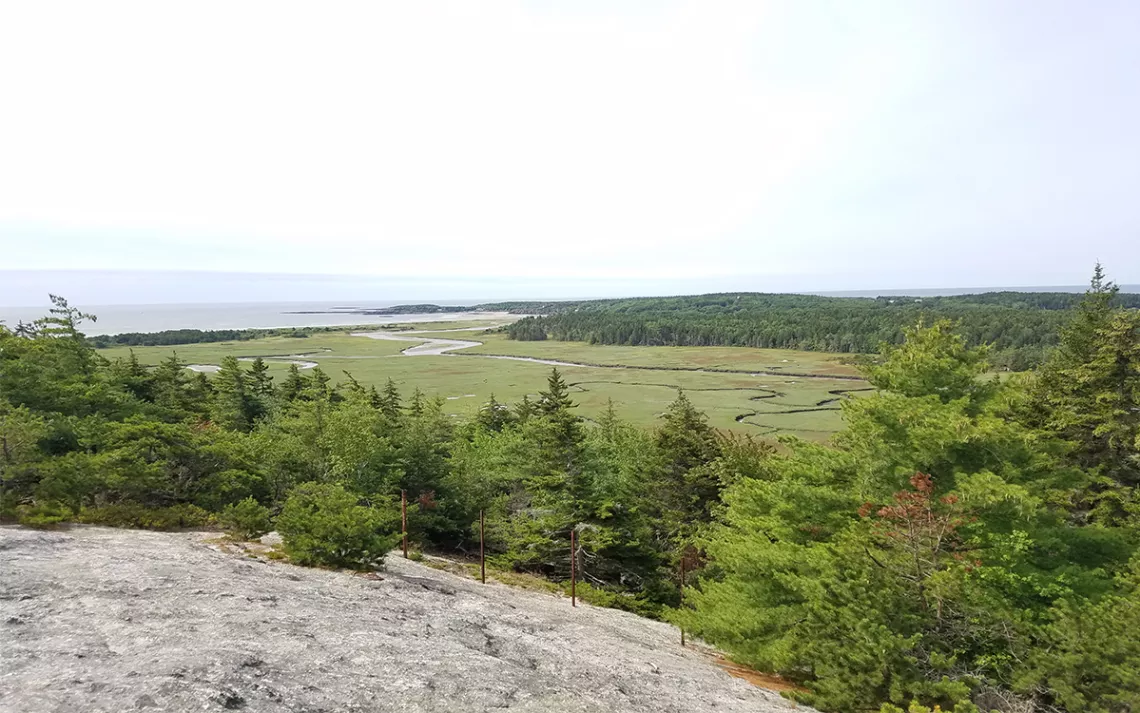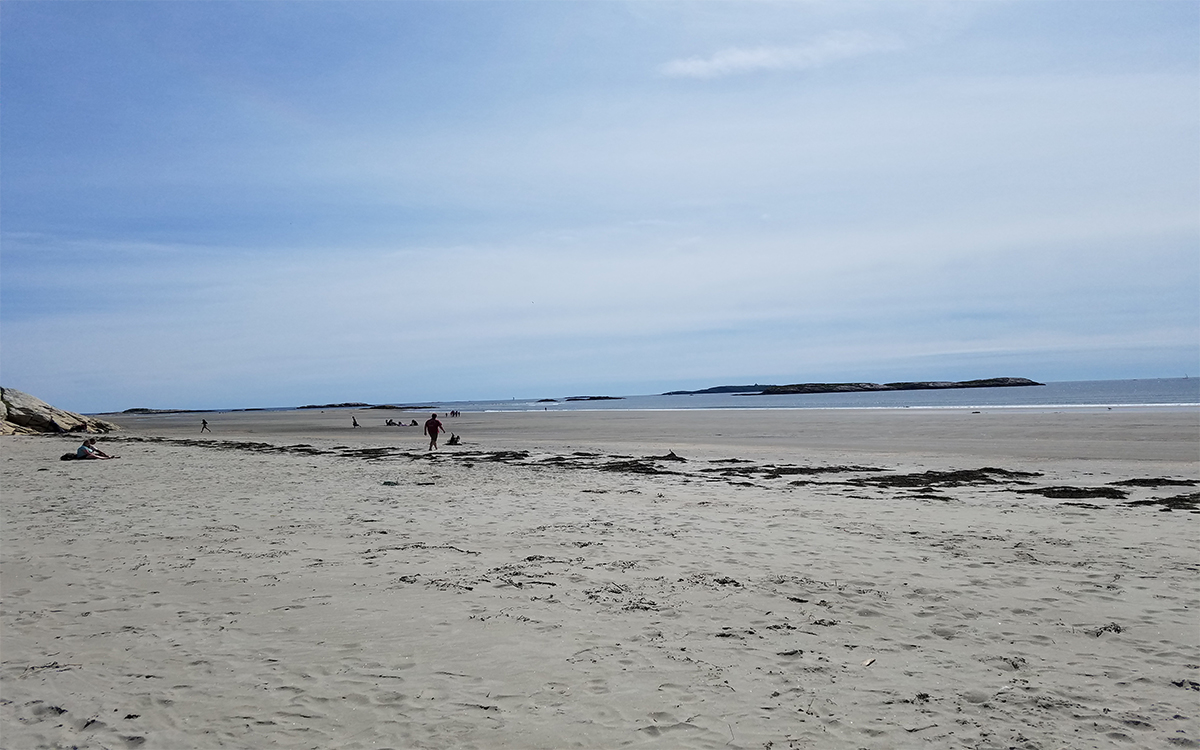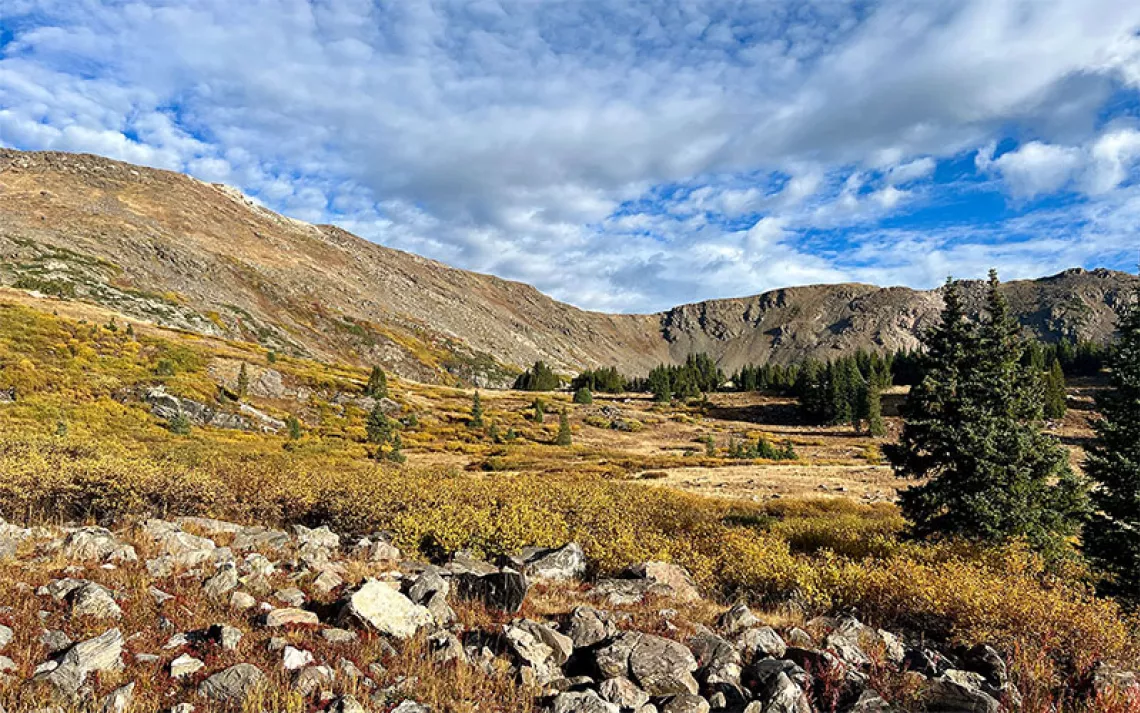Maine's Best-Kept-Secret Beach
Over Morse Mountain and through the woods to Seawall Beach

Photos by Emma Rose Gallimore
Nerves run high as we turn off the pavement and onto the dirt of Morse Mountain Road. Though no more than 30 cars at a time are allowed to park in the lot at the trailhead, nearly 20,000 people hike to Seawall Beach during the gate-keeping season from late March to late November.
We’d read reviews from other hikers who had arrived as early as 9 A.M. and been turned away. It’s almost 10 now. But we’re lucky. The volunteer at the tiny guard shack tells us there are still a few spots open.
“Park as close together as you can. We want to fit as many people in as possible,” he says.
We ease into a spot in front of a pile of lobster traps as tall as my Jeep. Why they are there, two miles from the shoreline and on conservation ground, my friends and I can’t begin to guess.
We stop by the guardhouse to grab a map, although it hardly seems necessary. The single track doubles as an access road for the few summer cottages still located on the property and is clearly marked. It cuts through the Bates-Morse Mountain Conservation Area, climbs up Morse Mountain, and winds down to the beach. About halfway up, a side trail guides you to the summit, where you can overlook a good chunk of the conservation area.
Bates College collaborates with the Nature Conservancy and Maine Audubon to preserve flora and fauna on the 600-acre property, including the oceanfront nesting sites of the endangered piping plover and the least tern. Though Morse Mountain and the beach are protected, both are open to the public.
We’d worn hiking boots and cargo shorts over our bathing suits, but we could have gotten away with sneakers. Walking up the gentle slope feels more like a stroll in the woods than a real hike. The trail is wide enough to accommodate the occasional car driving to or from the cottages. We stand aside to let them pass.
Suddenly the woods open up and we walk down into the Sprague River back dune area. This part of the trail is nearly level with the water; aquatic grasses make illusionary lawns on either side. I almost believe I could walk across them. But the smell of brackish water reminds me we are less than a mile from the Atlantic Ocean. The grass grows in a riverbed that feeds into the sea.

At the fork in the trail, we bear right and climb to the top of Morse Mountain. At first we are underwhelmed by the bits of scenery we glimpse between the trees. Then one of my friends discovers a footpath that curves out onto the bald side of the hill. From there we can see the ocean and the river and an endless forest of evergreens.
The river lies below us like an oil painting. It is perfect and still, completely devoid of people and vehicles, or any sign of modern life. Only the swoop of a far-off bird shows us that the landscape is not the work of some hyper-realistic painter.
When we’ve had our fill of the scenery, we retrace our steps back to the main trail. From here it slopes gently downward through pine forests. The air is crisp and cool. Now and then people pass us coming back from the beach or overtake us from the parking lot.
The trail is easy enough that parents let their small children walk along beside them. Or else they push sports-utility strollers with babies peeking at us from under floppy sun hats.
At the bottom of the slope, the trees start shuffling apart. We step from packed earth and asphalt onto sand. There, a notice board asks us to respect the dunes and the wildlife.
We stop at a bench to remove our boots and walk barefoot across the sand. A craggy rock face soars 20 feet or so into the air on our left. The dunes close in on our right. A few more steps and the beach opens up, stretching for miles on either side. The Atlantic Ocean glitters before us, tame at low tide.
Even in the height of summer, the ocean off the coast of Maine stays well below comfortable swimming temperature, averaging about 62°F. But the receding sea leaves behind long stretches of shallow water that warm under the sun. Careful of unseen holes, we wade in those pools up to our knees.
The people on the beach are spread out across such a wide area that we might as well be alone. Far in the distance, the crush of Popham Beach makes a striking contrast. More popular and more easily accessible, it is covered with beach umbrellas, cabanas, and kites, all of which are banned on Seawall.
Hours later, the tide begins to turn, and the noise of the waves rises steadily. We have to raise voices to talk to each other. It’s time to go home. We hike back over the mountain and through the woods to the world of cars and people.
As we drive away, another car is pulling into the tiny parking lot to take our place. I silently congratulate them on taking the road less traveled.
Follow in the Writer's Footsteps
Where: Morse Mountain Trail to Seawall Beach in Phippsburg, Maine.
Getting There: From Bath, Maine follow Route 209 South for 11.6 miles. Continue straight past Popham Beach onto Route 216. Morse Mountain Road is on the left. This is an out and back route about 2 miles one-way.
When to Visit: While you can enter the conservation area any time of the year, a gatekeeper is posted in the parking-lot from late March to late November. You’re most likely to spot the Piping Plover and Least Tern during the summer months.
What to Wear: If you intend to swim, wear a bathing suit under your clothes. There are no changing or bathroom facilities on the beach.
Permits: None required.
Pro Tip: When you get to the top of Morse Mountain you’ll see a small footpath to the right of the main trail. Take that path for 180 degree views of the conservation area.
Cost: Free to all, but donations are accepted to support conservation efforts.
 The Magazine of The Sierra Club
The Magazine of The Sierra Club






